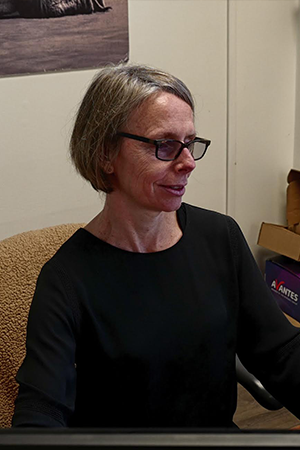What Does Spectrophotometers Do?
What Does Spectrophotometers Do?
Blog Article
What Does Spectrophotometers Do?
Table of ContentsSee This Report about Circularly Polarized LuminescenceAll about Uv/vis9 Simple Techniques For Uv/visThe Circularly Polarized Luminescence PDFsSee This Report on Circularly Polarized Luminescence

Spectrophotometry is most typically used to ultraviolet, noticeable, and infrared radiation, contemporary spectrophotometers can interrogate large swaths of the electro-magnetic spectrum, including x-ray, ultraviolet, visible, infrared, and/or microwave wavelengths. Spectrophotometry is a tool that depends upon the quantitative analysis of molecules depending upon just how much light is soaked up by colored compounds.
Fascination About Uv/vis
A spectrophotometer is frequently utilized for the measurement of transmittance or reflectance of services, transparent or nontransparent solids, such as polished glass, or gases. Although many biochemicals are colored, as in, they take in noticeable light and therefore can be measured by colorimetric procedures, even colorless biochemicals can typically be transformed to colored substances ideal for chromogenic color-forming responses to yield substances suitable for colorimetric analysis.: 65 However, they can also be developed to measure the diffusivity on any of the noted light ranges that generally cover around 2002500 nm utilizing various controls and calibrations.
An example of an experiment in which spectrophotometry is used is the decision of the balance constant of a service. A certain chain reaction within an option might take place in a forward and reverse instructions, where reactants form items and items break down into reactants. Eventually, this chemical reaction will reach a point of balance called a balance point.
The Basic Principles Of Uv/vis/nir
The quantity of light that goes through the solution is indicative of the concentration of specific chemicals that do not permit light to travel through. The absorption of light is due to the interaction of light with the electronic and vibrational modes of particles. Each kind of molecule has an individual set of energy levels related to the makeup of its chemical bonds and nuclei and thus will absorb light of particular wavelengths, or energies, leading to special spectral homes.
They are commonly used in many industries consisting of semiconductors, laser and optical manufacturing, printing and forensic assessment, as well as in labs for the research study of chemical compounds. Spectrophotometry is frequently utilized in measurements of enzyme activities, decisions of protein concentrations, determinations of enzymatic kinetic constants, and measurements of ligand binding reactions.: 65 Eventually, a spectrophotometer is able to figure out, depending on the control or calibration, what substances are present in a target and precisely how much through calculations of observed wavelengths.
This would come as an option to the previously produced spectrophotometers which were unable to take in the ultraviolet properly.
A Biased View of Uv/vis
It would be found that this did not give acceptable outcomes, for that reason in Design B, there was a shift from a glass to a quartz prism which permitted much better absorbance results - circularly polarized luminescence (https://www.kickstarter.com/profile/olisclarity1/about). From there, Model C was born with an adjustment to the wavelength resolution which ended up having three systems of it produced
It was produced from 1941 to 1976 where the price for it in 1941 was US$723 (far-UV accessories were a choice at extra expense). In the words of Nobel chemistry laureate Bruce Merrifield, it was "probably the most essential instrument ever developed towards the improvement of bioscience." Once it ended up being ceased in 1976, Hewlett-Packard developed the first commercially readily available diode-array spectrophotometer in 1979 referred to as the HP 8450A. It irradiates the sample with polychromatic light which the sample takes in depending on its properties. It is transmitted back by grating the photodiode range which identifies the wavelength region of the spectrum. Considering that then, the creation and execution of spectrophotometry gadgets has increased exceptionally and has turned into one of the most innovative instruments of our time.

Little Known Facts About Circular Dichroism.
The grating here are the findings can either be movable or fixed.
In such systems, the grating is fixed and the strength of each wavelength of light is determined by a different detector in the range. In addition, most modern mid-infrared spectrophotometers use a Fourier change method to obtain the spectral info - https://lwccareers.lindsey.edu/profiles/4273853-julie-ann-desa-lorenz. This method is called Fourier transform infrared spectroscopy. When making transmission measurements, the spectrophotometer quantitatively compares the portion of light that goes through a reference option and a test solution, then digitally compares the intensities of the 2 signals and calculates the percentage of transmission of the sample compared to the recommendation requirement.

Report this page